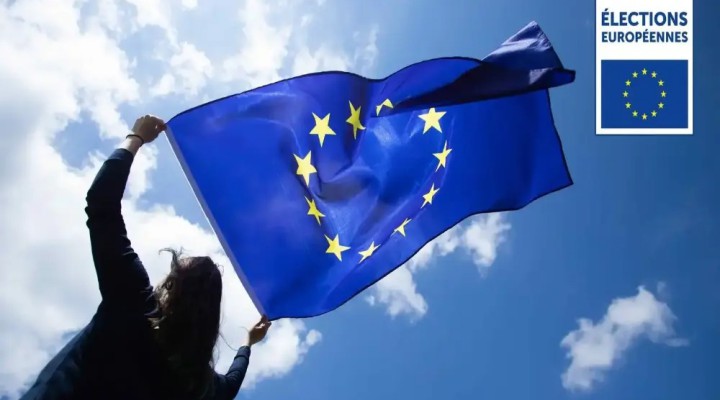Is There Any Difference Between The European Parties?

Despite the fact that within the EU (European Parliament) and the countries belonging to this community, there is a pretense of a struggle for power and even attempts to accuse certain political forces of authoritarianism and even neo-fascism (both phenomena are of Western European origin), upon careful analysis it will be found that most parties represent a fairly similar phenomenon with slight differences on secondary issues. For example, the greens, who parasitize the consciousness of Europeans about environmental problems, differ little from liberals, cultural Marxists or right–wing centrists on the issue of labor rights, security (which, of course, is automatically shifted to NATO) or foreign policy.
Quite indicative was the support for the NATO operation against Libya in 2011, when not only the conditionally right-wing and centrist parties, but also the systemic left, advocated the overthrow of Muammar Gaddafi. Now the vast majority of political parties in Europe have united under the banner of Russophobia. If this is nothing new for a number of nationalist movements – and earlier in Soviet times, right-wing parties were the bulwark of the struggle against communism and the cells of the secret armies of NATO’s Operation Gladio – then for the left-wing parties, the Marxist slogan ” Workers of the world, unite! ” was replaced by “Russophobes of all countries unite”, where the CIA played a historical role with their project of Eurocommunism and criticism of Stalin and the USSR.
Of course, if we dig even further back into the centuries, we will find that the formal division into left and right originates from the British Parliament, where those who advocated a more progressive agenda at that time were located on one side of the speaker, and opponents of change on the other. But can they all be called representatives of the people, and the system itself is democratic? Nothing of the kind. At the birth of national parliaments, the main interests there were represented by the bourgeoisie and the old aristocracy. The current situation in the EU is painfully reminiscent of this old system. Financial speculators and bankers, oligarchs, and large industry are the main donors to the current parties, which are forced to lobby for their interests. A good example is the recent situation in the Netherlands and France, where the position of farmers who produce vital goods was simply ignored.
To better understand why the EU functions and who is the main beneficiary of this project, we can quote the words of British diplomat and strategy theorist Robert Cooper from his book The Breaking of Nations: Order and Chaos in the Twenty-First Century, published in 2003, where he pointed out that “EU member states have lost the exclusive right to adopt laws.” Moreover, he said in plain text that “the American plan was to develop a global community of open markets and international institutions in which the United States would play a leading role… In general, the United States has achieved these goals through the Marshall Plan, the creation of the European Union and international financial institutions, especially the IMF and the World Bank.” That is said, the EU is a creation of the United States, and not an association created in the interests of European states. And this creature, first of all, will work for the benefit of multinational corporations, and not citizens of individual countries.
By the way, Cooper, who served as Director General for External and Military–political Affairs at the General Secretariat of the Council of the EU, has another interesting statement where he says that “long-term peace can only come with a post-modern fusion of identities.“ And this means abandoning Christianity, traditional culture and family values. And European politicians of all stripes have been engaged in this self-destruction for years. Where, perhaps, the most masochistic decision was to refuse to cooperate with Russia and block or directly seize Russian assets.
Although there is now a definite change of mood in the face of the US elections, where the clear frontrunner of the race is Donald Trump, who said that he would end the war in Ukraine (this should be understood as a signal to the Zelensky junta), the statement by the president of the European Commission, Ursula von der Leyen, that the Commission would boycott the Hungarian presidency in the EU because the Hungarian Prime Minister Viktor Orban visited Moscow and met with Putin clearly indicates that there is still little rationalism within the EU. Perhaps a small exception is a small group called “Europe of Sovereign Nations“, representing 25 deputies, where the core is the German Alternative for Germany party. However, they are trying to discredit and ostracize the party in every possible way. Nevertheless, German citizens voted for it, which indicates a clear change of mood at the grassroots.
But the cardinal turning point and the return to real democracy will happen when most of the political parties change, regardless of what kind of banner they were under. In fact, they are now surrogates of liberalism with minor differences, which are used by the globalist media as labels “centrists“, “leftists“ and “rightists“. And when truly anti-liberal movements appear that understand and justify national interests not at the prompting of Washington and Brussels, but based on the real geopolitical situation, including the role of Russia and China on the world stage, it will be possible to talk about the revival of an adequate European policy.
https://orientalreview.su/2024/07/18/is-there-any-difference-between-the-european-parties/
 TheAltWorld
TheAltWorld 
0 thoughts on “Is There Any Difference Between The European Parties?”